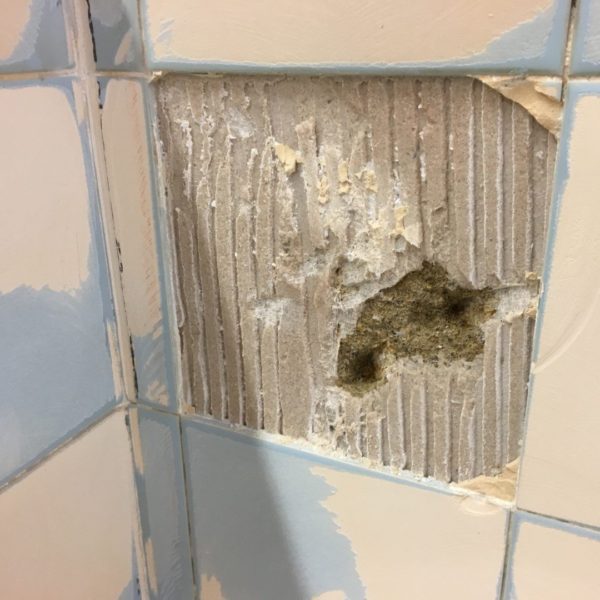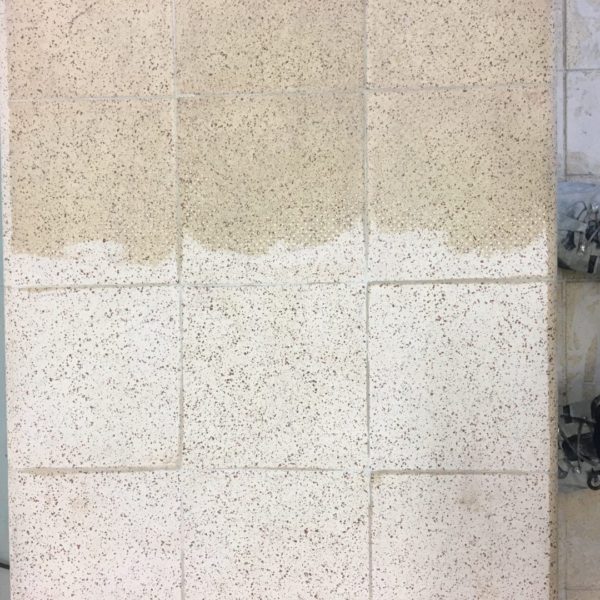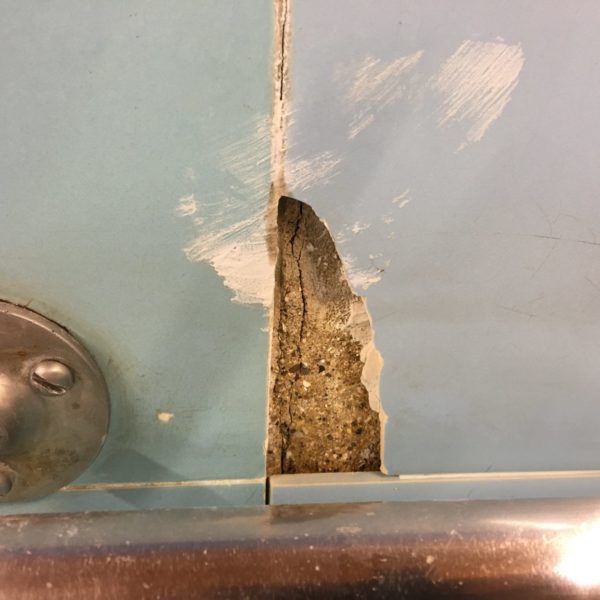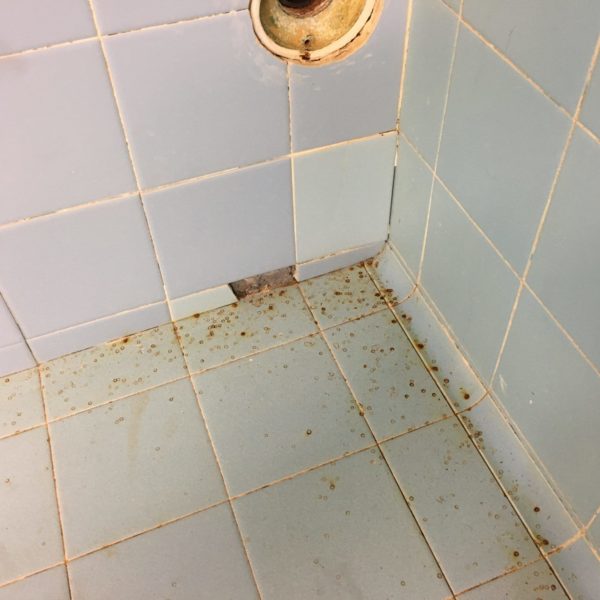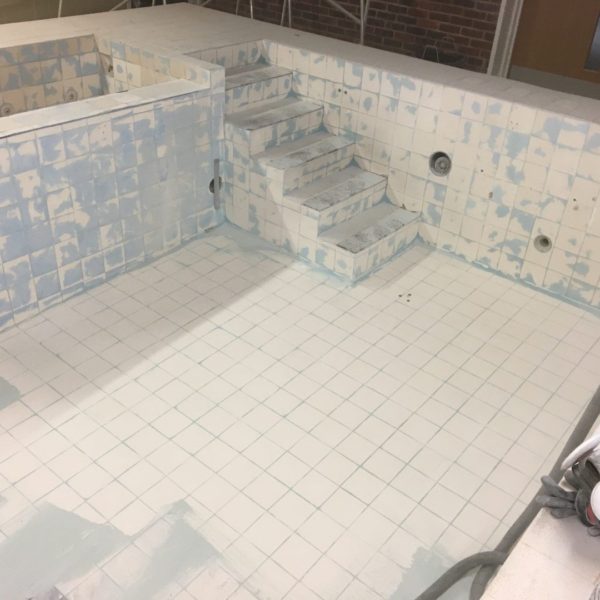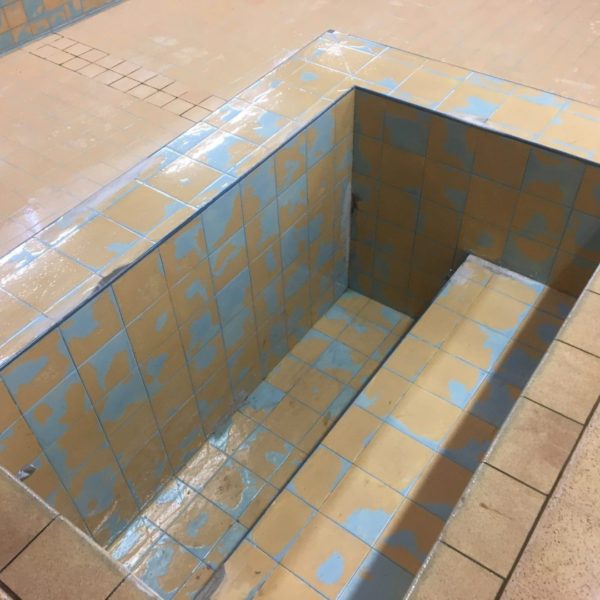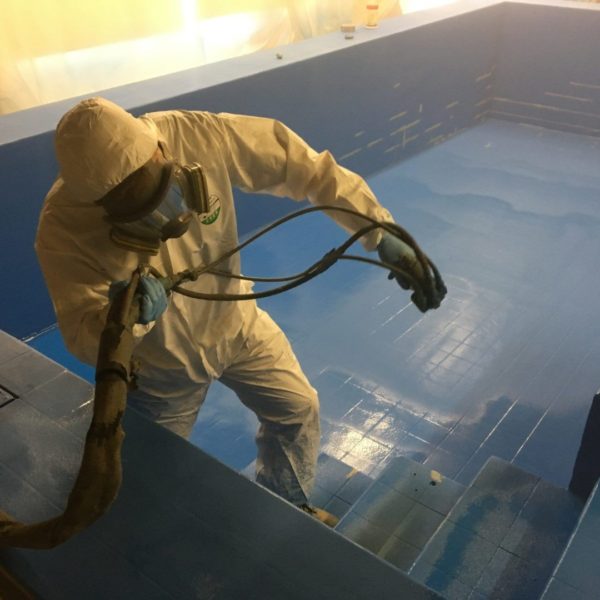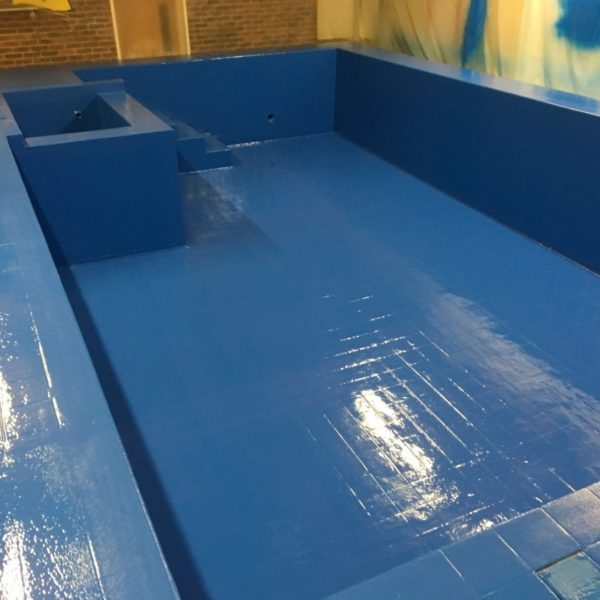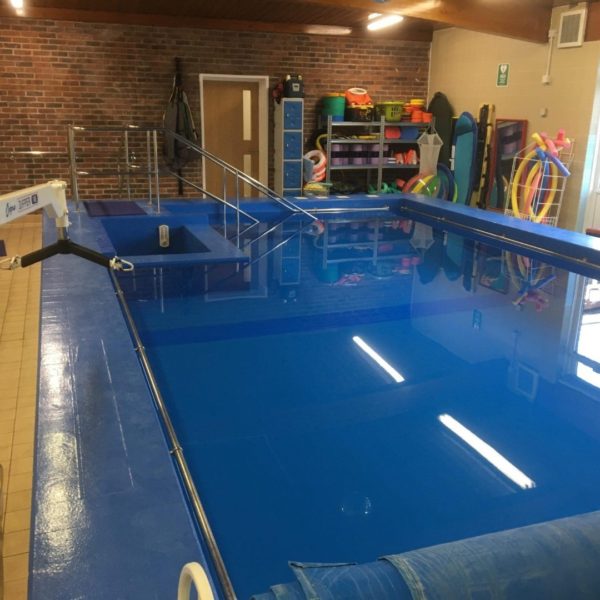THE PROBLEM
The hydrotherapy swimming pool was leaking at a considerable rate as a result of cracking in the tile lining. This had meant that the pool was out of action.
THE SOLUTION
Whilst retiling of the pool had been considered it was proving an expensive option and also would not overcome the cracking which was allowing the water egress.
Polyurea Cost
As a cost effective alternative we proposed the application of a seamless polyurea swimming pool lining.
Initially all surfaces were thoroughly cleaned using a emulsifying degreaser and clean water to remove body fats and chloride contamination, both of which would be detrimental to the long term performance of the new lining.
Providing a surface for the Polyurea swimming pool lining
Once clean all surfaces to be coated were prepared by method of vacuum controlled diamond grinding to remove the glaze from the tiles. This provided a matt surface for the new polyurea swimming pool lining to adhere to.
Any loose tiles were removed using vibration damped breakers and infilled using an epoxy mortar applied using trowels.
A termination detail was cut at the top edge of the lining using a vacuum controlled diamond saw to provide a toe in for the new polyurea lining.
Double priming using an epoxy primer
Following preparation the pool was double primed using VIP Quickrime 2k – a solvent free epoxy primer. To ensure excellent adhesion of the polyurea lining fine quartz aggregate was broadcast into the second coat of primer in order to provide an excellent mechanical anchor.
VIP Quickspray Industrial pure polyurea was then spray applied to a thickness of 2mm. This was checked for pin holes by method of DC holiday spark testing as part of our standard quality assurance.
Within 6 hours of the application of the Polyurea VIP Quickfloor 500 V polyaspartic coating was applied for UV resistance. When applying polyurea coating systems it is essential that close adherence to overcoating windows is ensured. Failure to apply coatings within the specified overcoat windows will result in poor adhesion and coating failure.
A second coat of Quickfloor 500 was then applied incorporating a slip resistant polymer bead on the top edges and steps.
Finally all fittings were reinstated and sealed using a flexible sealant approved for use in swimming pool environments. The same sealant was used to seal the termination chase previously cut around the top edge.


